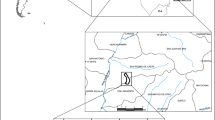Abstract
Ecotourism potentially provides a sustainable approach to tourism development in national parks. The paper focuses on ecotourism impacts and the status of wildlife within the Rajiv Gandhi National Park (Nagarhole) situated in Karnataka. It explores a multitude of interactions that exist among wildlife, conservation efforts, socio-economic, and relocation attempts of the tribal people in the park. Field exploration was undertaken to identify the impacts of ecotourism. The results revealed the ongoing effort by the government to relocate the tribal people within the park and the difficulty faced by park officials to cope with the numerous impacts and conservation strategies in the park. The tourists were engaged in different ecotourism activities and made an observation on the lack of educational awareness and biophysical impacts such as littering and vegetation damage. This paper will contribute a greater understanding of the impacts of ecotourism management for sustainability of the national park.


Similar content being viewed by others
References
Herald, D. (2005). Using satellites for detecting forest fires in Karnataka is mentioned by “Eye-in-the-sky tech to combat forest fires”. The Printers (Mysore) Private Ltd.
ENVIS. (2012). “Protected Areas in Karnataka”, Protected Area Network. Retrieved February 27, 2012.
Karanth, U. K., Sunquist, M., & Chinappa, K. M. (1999). Long-term monitoring of tigers: Lessons from Nagarhole. In J. Seidensticker, S. Christie, & P. Jackson (Eds.), ‘Riding the tiger’—Tiger conservation in human dominated landscapes. Cambridge: Cambridge University Press.
Lucas, R. C. (1990). Wilderness use and users: Trends and projections in wilderness recreation management: An overview. In J. C. Hendee, G. H. Stankey, & R. C. Lucas (Eds.), Wilderness management. Golden, CO: North American Press (Fulcrum Publishing).
Mysore Nature. (2012). http://www.mysorenature.org/kodagu-coorg-sector/bird-checklist.
Protected Area Update. (2003). Hunting is the biggest threat to wildlife in protected areas, 41 & 42.
Rajendran, S. (2006). Destruction caused by elephants in Hassan district. “State seeks centre’s nod for translocating elephant herd”.
The Hindu. (2007). Electrocution of an elephant in Chamarajanagar district is mentioned by “Elephant electrocuted”.
Wildlife First. (2007). Some conservation methods being used in Karnataka to protect flora and fauna are mentioned by Shekar Dattatri. “Tigers in India A chance for survival”.
World Heritage sites, Tentative lists. (2007). Western Ghats sub cluster, Nilgiris. UNESCO, http://whc.unesco.org/en/tentativelists/2103/.
Author information
Authors and Affiliations
Corresponding author
Rights and permissions
About this article
Cite this article
Ramchurjee, N.A. Impacts of ecotourism in Rajiv Gandhi National Park (Nagarhole), Karnataka. Environ Dev Sustain 15, 1517–1525 (2013). https://doi.org/10.1007/s10668-013-9449-x
Received:
Accepted:
Published:
Issue Date:
DOI: https://doi.org/10.1007/s10668-013-9449-x




